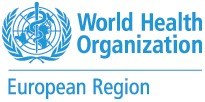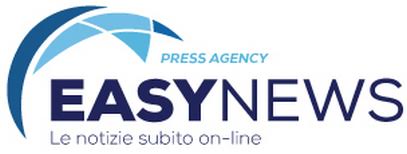
WHO/Europe launches new platforms to track and share real-time data on respiratory viruses
With Europe and Central Asia now in the grip of the colder months, cases of COVID-19, influenza and other respiratory virus infections are beginning to rise once again. WHO/Europe recently launched a seasonal campaign to protect populations and health systems against the cumulative impact of these circulating viruses.
SARS-CoV-2, the virus that causes COVID-19, is now one of several circulating respiratory viruses, including influenza and respiratory syncytial virus (RSV), and continues to present a serious public health risk. WHO/Europe is implementing a transition plan that includes several shifts and expansions in the approach to collaborative surveillance for COVID-19, influenza and other respiratory infections.
Changes in testing, genomic characterization and reporting across many countries mean that reported data on COVID-19 cases need to be interpreted with caution. Indicators from a range of established systems such as sentinel surveillance in primary and secondary care, and novel systems such as wastewater monitoring, provide a better understanding of the intensity of transmission, disease severity and viral evolution of these viruses.
Additionally, systems measuring intensive care unit occupancy, hospital bed occupancy and excess all-cause mortality across age groups will support country planning and estimates of the burden of disease.
As part of this change, WHO/Europe has made several changes to its respiratory virus surveillance and data reporting systems.
Reflecting some of these changes, WHO/Europe and the European Centre for Disease Prevention and Control (ECDC) have launched the weekly European Respiratory Virus Surveillance Summary (ERVISS). The new online platform displays integrated surveillance data for influenza, COVID-19 and RSV in the WHO European Region, including the European Union/European Economic Area.
ERVISS will also contribute to the new WHO/Europe COVID-19 Information and Data Hub, a comprehensive resource that provides links to the most current health information, datasets and products related to COVID-19.
Dr Richard Pebody, WHO/Europe’s Programme Area Manager for Infectious Hazard Management, explained the move.
“We have been working for some time with Member States as they move their respiratory surveillance systems from pandemic mode to a more routine, sustainable, integrated approach, combining COVID-19 with other respiratory viruses. Together with ECDC support, we have provided guidance to Member States across the Region on what those national surveillance systems should look like.”
Dr Pebody continued, “This will help countries to better implement those public health and social measures which are common to some of these viruses, plan hospital bed capacity and implement vaccine programmes more holistically.”
He added, “Surveillance systems at a national level should be focused on well designed, representative national sentinel monitoring in primary and secondary care, but should also include a mosaic of complementary data systems to ensure a full and integrated virologic and epidemiologic picture. Pre-pandemic, only influenza was vaccine-preventable, but surveillance is even more important now, to monitor activity for planning coronavirus vaccines and soon-to-be-introduced RSV vaccines.”
The ERVISS system objectives are to:
- monitor the intensity, geographical spread and temporal patterns of influenza, COVID-19 and other respiratory virus infections to inform optimal mitigation measures;
- keep track of severity and risk factors for severe disease, and assess the impact on health-care systems of these infections to inform mitigation measures;
- observe changes and characteristics of circulating and emerging respiratory viruses, particularly virological changes in influenza viruses, SARS-CoV-2 and other respiratory viruses, to inform the development of treatments, drugs and vaccines; and
- replace 3 existing regional products: Flu News Europe, the WHO/Europe Weekly COVID-19 Surveillance Bulletin, and the COVID-19 Situation in the WHO European Region dashboard.
The Information and Data Hub will also include WHO/Europe’s Public Health and Social Measures Monitoring platform and the WHO/Europe COVID-19 Vaccine Programme Monitor, as well as databases on COVID-19-related health information that will continue to be accessible for historical reference.
These systems are critical to ensuring that respiratory viruses are monitored optimally and together to guide timely, appropriate, holistic control and prevention measures. They will also be key in the detection and monitoring of future pandemics.
Dr Catherine Smallwood, WHO/Europe’s COVID-19 Incident Manager, said, “The COVID-19 Situation in the WHO European Region dashboard played a pivotal role in providing essential information during the early stages of the pandemic. However, the landscape of this has now shifted, and so have data needs. This is why the creation of the new Information and Data Hub is so important. This will be developed and expanded to cover future health threats.”
ENDS
This information was brought to you by Cision http://news.cision.com
If you would rather not receive future communications from WHO Regional Office for Europe, please go to https://optout.ne.cision.com/en/vd5BfgVuqzrXMdNYWfFyzbRmWmwxFUngDXqoe2Q9Np6FUMHwF2MFBwjWKnXvsk3aV96UZ36CniyjKvDqasV6rSrkwuvPPCLQFRZytXgCLoAA9Pe93Qd3eNkLypwqjbpz3XR.
WHO Regional Office for Europe, Marmorvej 51, Copenhagen, 2100 Denmark



